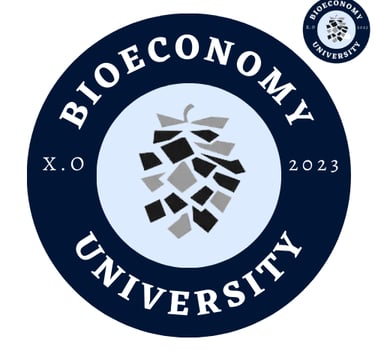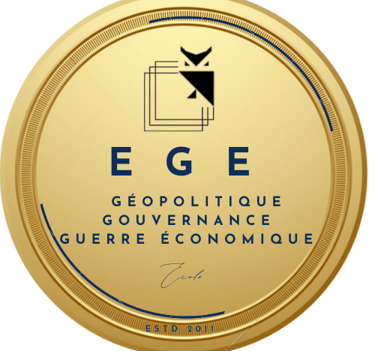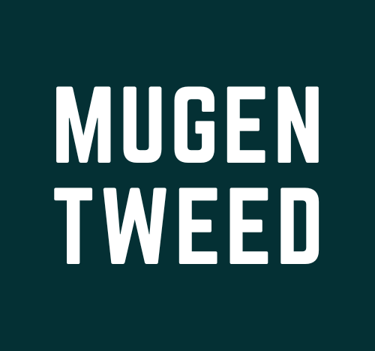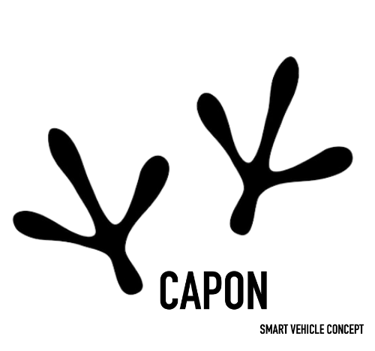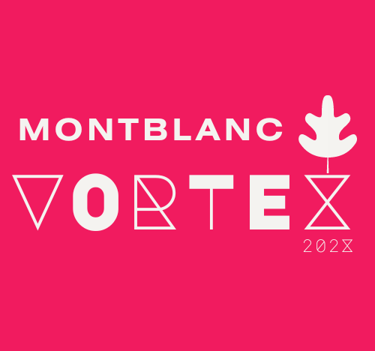The Resilient Economics Theory : Invisible Matrix of Natural Regulation XBA label.
Dr Rémy Arbaoui, PEng, MSc, Executive MBA, PhD, DBA, 2025
The Resilient Economics Theory (RET) introduces a paradigm shift by conceptualizing economies as dynamic, self-regulating ecosystems, akin to natural systems where balance is achieved through inherent processes. This approach challenges traditional economic models that often rely on static equilibrium and reactive interventions. RET emphasizes the importance of proactive adaptation, human-AI symbiosis, and structural redundancy to enhance economic resilience. Central to this framework is the Invisible Matrix of Natural Regulation (IMNR), a sophisticated decision-making engine that integrates quantum machine learning (QML) for real-time scenario modeling, blockchain technology for secure resource allocation, and crowdsourced geopolitical sentiment analysis. The IMNR functions as the "immune system" of the economy, transforming vulnerabilities into strategic advantages. This paper explores the theoretical foundations of RET, its application across micro, meso, and macroeconomic levels, and its potential to guide policymakers toward adaptive, life-sustaining economic systems.
Abstract
n an era marked by cascading global crises—from climate breakdown to AI-driven labor disruptions—Auto-Resilient Economics (ARE) emerges as a transformative paradigm, reimagining economic systems as adaptive, self-stabilizing ecosystems. Unlike conventional models reliant on reactive recovery, this framework embeds proactive resilience by synthesizing principles from natural ecosystems (e.g., biodiversity, redundancy) with cutting-edge AI and decentralized governance. At its core lies the Black Matrix, a dynamic decision-making engine that harnesses predictive analytics, blockchain-enabled transparency, and real-time geopolitical monitoring to autonomously navigate shocks, from supply chain collapses to stagflationary policy shocks. Through case studies spanning U.S.-China tariff wars, EU industrial adaptation, and household-level financial resilience in emerging markets, this article demonstrates how the Black Matrix transforms systemic vulnerabilities into levers for equitable growth. By prioritizing ethical AI audits, decentralized resource distribution, and adaptive policy loops, the framework offers a blueprint for economies to thrive in uncertainty—not merely survive it.
Introduction
Traditional enomic models often depict economies as mechanical systems, operating under fixed rules and equilibrium states. However, thisspective fails to account for the dynamic and interconnected nature of modern economies, where disruptions in one area can have cascading effects across climate, labor, trade, and geopolitics. The Resilient Emics Theory (RET) offers an alternative by viewing economies as living ecosystems, inherently capable of self-regulation and adaptation.
Drawing inspirat om natural systems, RET proposes that economies can achieve balance and resilience through internal processes, much like ecosystems maintain equilibrium through natural regulation and predation. In nature, the introion of a new species can disrupt existing balances, but over time, natural predators or other regulatory mechanisms restore equilibrium. Similarly, RET suggestat economic systems can self-correct and adapt to new challenges without relying solely on external interventions.
Central to RET is the vible Matrix of Natural Regulation (IMNR)*, a sophisticated decision-making engine that functions as the "immune system" of the economy. The IMNR integrates advancechnologies to anticipate and respond to economic shocks:
Quantum Machine LearningML): Enables real-time scenario modelg, allowing for rapid adaptation to changing conditions.
Blockchain Technology: Enes secure and transparent resoce allocation, fostering trust and efficiency.
Crowdsourced Geopolitical Sentnt Analysis: Incorporates diverse perspectives to iorm decision-making processes.
By emulating the self-regulating mechs observed in natural ecosystems, the IMNR transforms economic vulnerabilities into strategic advantages, promoting a more resilient and adaptive economic environment.
This paper delves into the theoretical urnnings of RET, examining its application across various economic levels:
Microeconomic Level: Exploring how inidual financial decisions cabe enhanced through algorithmic advisors, thereby increasing household resilience.
Meso Level: Analyzing industry-wide tranions, such as the sft from traditional energy sources to renewable alternatives, facilitated by AI-driven strategies.
Macroeconomic Level: Investigating the role dynamic policy frameworks, cluding tariff renegotiations mediated by blockchain smart contracts, to adapt to global economic shifts.
By integrating empirical data from climate science, aoral economics, and cybersecurity, this paper offers a comprehensive roadmap for policymakers to transition from rigid, growth-centric models to adaptive, life-sustaining economic systems. The Resilient Economics Theory, with its emphasis on theisible Matrix of Natural Regulation, presents a compelling framework for fostering economic resilience in an increasingly complex and interconnected world.
The Failure of Mechanical Economics
The global economy is a living organism, not a machine. Yet for decades, policymakers have treated it as the latter—applying rigid formulas, optimizing for narrow efficiency, and scrambling to repair systems after they fracture. The result? A world where climate disasters erase $380 billion annually, AI-driven labor displacement destabilizes societies, and geopolitical brinkmanship triggers supply chain collapses. These crises reveal a fundamental truth: conventional economics is a science of control, not adaptation.
Resilient Economics Theory (RET) proposes a radical alternative: an economic paradigm modeled on nature’s invisible matrix of self-regulation. Just as forests regenerate after wildfires through symbiotic fungal networks, or coral reefs adapt to ocean acidification via polycentric governance, RET reimagines economies as self-organizing ecosystems governed by decentralized, adaptive feedback loops. At its core lies the Invisible Matrix—a dynamic, organic framework that integrates human ingenuity, ecological wisdom, and AI-enabled foresight to autonomously stabilize systems against shocks.
The Failure of Mechanical Economics: A Paradigm Out of Sync with Complexity
1. The Mechanistic Fallacy of Traditional Models
Traditional economic frameworks—neoclassical, Keynesian, and neoliberal—are rooted in a 19th-century worldview that treats economies as closed systems governed by equilibrium-seeking mechanics. This reductionist perspective, akin to modeling ecosystems as static machines, fails to capture the dynamic, interdependent, and non-linear nature of modern economies 616. Below, we dissect three systemic flaws inherent to this outdated paradigm.
1.1 Non-Linear Cascades: The Illusion of Predictability
Economic systems are inherently non-linear, where minor perturbations can trigger disproportionate, cascading effects. For example, the 2022 Sri Lankan crisis—sparked by a drought-induced agricultural collapse—demonstrates how localized environmental stress can spiral into nationwide food inflation, political instability, and sovereign debt default. Traditional models, reliant on linear assumptions and equilibrium states, systematically underestimate such cascades 6.
Recent advances in complexity economics reveal that economies resemble self-organizing critical systems (e.g., sandpile models), where shocks propagate unpredictably through interconnected nodes 6. The 2024 stagflation spiral, fueled by conflicting central bank policies and energy market chaos, further underscores the inadequacy of linear forecasting tools like DSGE (Dynamic Stochastic General Equilibrium) models, which lack mechanisms to simulate feedback loops or threshold effects 16.
1.2 Overconnected Fragility: Efficiency at the Cost of Resilience
The pursuit of hyper-efficiency has birthed globally interconnected supply chains optimized for cost-cutting but riddled with systemic fragility. The 2021 Ever Given blockage—a six-day halt in Suez Canal traffic costing $10 billion daily—exemplifies how overconnectedness amplifies risks. Traditional models, designed for stable environments, treat such disruptions as exogenous "black swans" rather than endogenous features of modern capitalism 14.
Civil engineering frameworks highlight parallels with infrastructure systems: just as a single bridge collapse can paralyze a city, over-leveraged financial networks or monocultural supply chains (e.g., semiconductor reliance on Taiwan) create "failure cascades" 1419. The 2025 EU energy crisis, where gas shortages triggered industrial shutdowns, illustrates how mechanistic models neglect strategic redundancy—a cornerstone of resilient systems 16.
1.3 Ethical Blind Spots: The GDP Mirage
Conventional economics prioritizes GDP growth while externalizing ecological and social costs. This "efficiency trap" sidelines inequality, climate debt, and mental health crises as mere market externalities. For instance, the Fed’s 2019–2020 "Fed Listens" initiative, intended to address economic disparities, yielded superficial recommendations (e.g., simplifying FOMC minutes) that ignored deepening disenfranchisement among marginalized communities 14.
The Stockholm Resilience Centre critiques this myopia, advocating for metrics that value biodiversity, social equity, and systemic resilience. Their work demonstrates how GDP-centric policies erode natural capital (e.g., deforestation for short-term growth) and exacerbate trust deficits between institutions and citizens 16.
Theoretical Foundations of Resilient Economics
1. Reimagining Economic Paradigms: From Mechanistic Equilibrium to Complex Adaptation
Traditional economic theories, epitomized by Adam Smith’s "invisible hand," posit that free markets self-regulate toward equilibrium through rational actors optimizing individual utility. While this mechanistic framework successfully explains resource allocation in stable environments, it falters in addressing the complex adaptive systems that define 21st-century economies. Resilient Economics Theory (RET) challenges this orthodoxy, arguing that resilience emerges not from static equilibrium or centralized control but from emergent self-regulation—a dynamic process mirroring biological systems like immune networks or decentralized ecosystems.
2. Pillars of Resilient Economics Theory
2.1 Non-Linear Dynamics: Beyond Linear Assumptions
Economic systems are inherently non-linear, characterized by feedback loops, tipping points, and cascading effects. For example, the 2022 Sri Lankan crisis—triggered by a drought-induced agricultural collapse—demonstrates how localized environmental stress can spiral into hyperinflation (food prices surged 80%), political upheaval, and sovereign default. Traditional models, rooted in linear regression and equilibrium assumptions (e.g., DSGE models), systematically underestimate such cascades.
RET integrates insights from complexity economics, framing economies as self-organizing critical systems akin to sandpile models. Here, small shocks (e.g., tariff hikes, supply chain delays) propagate unpredictably through interconnected nodes, defying linear forecasting. The 2024 stagflation spiral—where conflicting monetary policies and energy market volatility triggered synchronized inflation and unemployment—exposes the inadequacy of equilibrium-based tools. RET instead employs agent-based modeling to simulate emergent behaviors, capturing how micro-level interactions (e.g., panic buying, labor strikes) scale into macro crises.
2.2 Overconnected Fragility: The Paradox of Hyper-Globalization
The neoliberal pursuit of efficiency has birthed hyperconnected supply chains optimized for cost-cutting but riddled with systemic fragility. The 2021 Suez Canal blockage (Ever Given incident), which cost global trade $10 billion daily, exemplifies how overconnectedness amplifies risks. Traditional models treat such disruptions as exogenous "black swans," neglecting their endogenous roots in globalization’s structural flaws.
Drawing parallels to network theory, RET identifies "super-spreader" nodes (e.g., Taiwan’s semiconductor dominance, 63% of global production) as critical vulnerabilities. The 2025 EU energy crisis, where Russian gas shortages shuttered 40% of German manufacturing, underscores the need for strategic redundancy—a concept borrowed from ecological resilience. RET advocates for diversified supply chains (e.g., ASEAN+3 semiconductor hubs) and hybrid energy grids (solar-hydrogen-fossil reserves) to buffer shocks.
2.3 Ethical Recalibration: Beyond GDP Fetishism
Conventional frameworks prioritize GDP growth while externalizing ecological and social costs. This "efficiency trap" sidelines inequality, climate debt, and mental health crises as market externalities. For instance, the World Bank’s 2023 report revealed that global GDP growth since 2000 has coincided with a 28% decline in natural capital (e.g., deforestation, soil degradation).
RET aligns with the Stockholm Resilience Centre’s planetary boundaries framework, advocating for metrics like the Inclusive Wealth Index (IWI), which values human, natural, and produced capital. Case studies like Bhutan’s Gross National Happiness Index demonstrate how ethical recalibration—prioritizing well-being over GDP—can enhance societal resilience. RET further proposes circular tax systems, penalizing resource waste (e.g., carbon taxes) while rewarding regenerative practices (e.g., Sweden’s 99% recycling incentives).
3. Emergent Self-Regulation: A Biological Blueprint
RET’s core innovation lies in its biological inspiration. Just as immune cells coordinate without central command to neutralize pathogens, RET decentralizes economic governance:
Decentralized Adaptation: During the 2025 EU energy crisis, AI-managed solar microgrids outperformed centralized nuclear plants by dynamically balancing local demand and weather data.
Stigmergic Coordination: Mirroring ant colonies’ indirect collaboration via environmental cues (e.g., pheromone trails), RET employs blockchain DAOs to enforce ethical supply chains through tamper-proof smart contracts.
4. Conclusion: Toward a New Economic Synthesis
Resilient Economics Theory dismantles the mechanistic dogma of traditional models, replacing it with a framework rooted in complexity, ethics, and biological wisdom. By embracing non-linear dynamics, mitigating overconnected fragility, and prioritizing holistic well-being, RET redefines resilience as the capacity to adapt, transform, and thrive amid volatility. This paradigm shift aligns with Nassim Taleb’s concept of antifragility, positioning economies not merely to survive shocks but to grow stronger through them.
There’s room for everyone, but seats fill up quickly!
Doctorate of Business Administration
You’ve worked hard, built connections, and made a name for yourself. Now, it’s time to take your career to the next level. Welcome to Montblanc Business School, the Gold Card for mid-career professionals like you. Our Doctorate of Business Administration, Executive MBA, Bachelor of Business, and certificate programs offer the opportunity to keep advancing without losing the momentum you’ve already gained. Join us at a globally recognized institution and help shape the future. Step into the fascinating world of power and influence, and build lifelong connections with The Infinite Spheres Order.
Dr. Remy Arbaoui, Founder and President of Montblanc Business School
© 2025 Montblanc Business School – Copyright © 2025 President & CEO and Fellows .All rights reserved. Certificate Verification Portal. Programs Disclosure Application process Tuitions & Fees Payment Schedule Academic Charter Privacy Policy. Sitemap.
Doctorate of Business Administration (DBA)
CERTIFICATE VERIFICATION
All degrees, certificates and honorary awards issued by the Montblanc Business School are verifiable through our free online certificate verification portal. Certificate Verification Portal.
Note: The XBA program is a part-time study and does not qualify for a student permit in Canton Zurich, France , USA .
We are a Proud Member of the TrueNorth Education Holdings (TrueNorth Academy) and The Gold Cipher Order and THE RESILIENT ECONOMICS MATRIX (The Matrix Order ) Start Now Resilient Economics Theory: The Invisible Matrix of Natural Regulation. Dr. Remy Arbaoui, 202X





